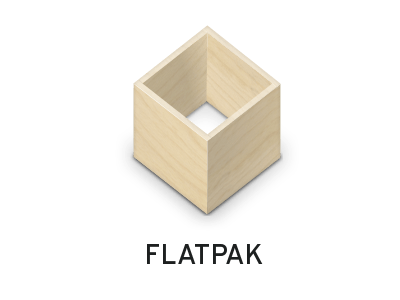How To Install Flatpak on AlmaLinux 9

In this tutorial, we will show you how to install Flatpak on AlmaLinux 9. AlmaLinux 9, a free and open-source Linux distribution that serves as a stable and reliable alternative to CentOS, has gained popularity among users seeking a robust operating system for their servers and workstations. One of the key features of AlmaLinux 9 is its compatibility with Flatpak, a universal package management system that simplifies the process of installing and managing applications across different Linux distributions.
This article assumes you have at least basic knowledge of Linux, know how to use the shell, and most importantly, you host your site on your own VPS. The installation is quite simple and assumes you are running in the root account, if not you may need to add ‘sudo‘ to the commands to get root privileges. I will show you the step-by-step installation of the Flatpak on AlmaLinux 9. You can follow the same instructions for CentOS and Rocky Linux or RHEL-based.
Prerequisites
- A server running one of the following operating systems: AlmaLinux 9.
- It’s recommended that you use a fresh OS install to prevent any potential issues.
- SSH access to the server (or just open Terminal if you’re on a desktop).
- Requires a minimum of 2 GB RAM and 20 GB of storage space for smooth installation and operation.
- You’ll need an internet connection to download the necessary packages and dependencies.
- You’ll need root or sudo privileges to install Flatpak and make system-wide changes. Make sure you have the necessary permissions before starting the installation process.
Install Flatpak on AlmaLinux 9
Step 1. Update Your System.
Before proceeding with the Flatpak installation, it is essential to ensure that your AlmaLinux 9 system is up to date. Open a terminal and run the following command to update your system packages:
sudo dnf clean all sudo dnf update
This command will fetch the latest package information from the configured repositories and upgrade any outdated packages to their latest versions. Keeping your system updated helps maintain stability, security, and compatibility with the latest software.
Step 2. Installing Flatpak.
With your system updated, you can now proceed to install Flatpak. AlmaLinux 9 includes Flatpak in its official repositories, making the installation process straightforward. To install Flatpak, run the following command in your terminal:
sudo dnf install flatpak
The package manager will resolve any dependencies and prompt you to confirm the installation. Press “Y” and hit Enter to proceed. Once the installation is complete, you can verify the installed version of Flatpak by running:
flatpak --version
Step 3: Add the Flathub Repository.
Flathub is the primary repository for Flatpak applications, offering a wide range of open-source and proprietary software. To access and install applications from Flathub, you need to add the repository to your Flatpak configuration. Follow these steps:
sudo flatpak remote-add --if-not-exists flathub https://flathub.org/repo/flathub.flatpakrepo
Once the repository is added, you can verify its presence by running:
flatpak remotes
By adding the Flathub repository, you gain access to a vast collection of applications that can be easily installed and managed using Flatpak. Flathub ensures that the applications are up to date and provides a consistent installation experience across different Linux distributions.
After installing Flatpak and adding the Flathub repository, it is recommended to reboot your AlmaLinux 9 system to ensure that all the changes take effect properly. Open a terminal and run the following command to reboot your system:
reboot
Step 4. Installing Flatpak Applications.
With Flatpak installed and the Flathub repository configured, you can now easily install applications using the Flatpak install command. For example, to install the popular image editing software GIMP, run the following command:
sudo flatpak install flathub org.gimp.GIMP
Flatpak will download the necessary runtime and dependencies, and install the application on your AlmaLinux 9 system. Once the installation is complete, you can verify the installed applications by running:
flatpak list
This command will display a list of all the Flatpak applications currently installed on your system.
Step 5. Running Flatpak Applications.
To run a Flatpak application, you can use the flatpak run command followed by the application ID. For example, to launch GIMP, which we installed in the previous step, run the following command:
flatpak run org.gimp.GIMP
Flatpak will start the application, and you can begin using it as you would with any other installed application. Alternatively, you can find the installed Flatpak applications in your desktop environment’s application launcher or menu.
Step 6. Updating Flatpak Applications.
One of the benefits of using Flatpak is the ease of updating applications. Flatpak allows you to update all installed applications with a single command. To update your Flatpak applications, run the following command:
sudo flatpak update
Flatpak will check for available updates for all the installed applications and their respective runtimes. If updates are found, Flatpak will download and install them automatically, keeping your applications up to date with the latest features and bug fixes.
Step 8. Removing Flatpak Applications.
If you no longer need a Flatpak application, you can easily remove it using the flatpak remove command. For example, to remove the GIMP application that we installed earlier, run the following command:
sudo flatpak remove org.gimp.GIMP
Flatpak will remove the application and any associated files from your AlmaLinux 9 system. If the application’s runtime is no longer required by other installed Flatpak applications, it will also be removed to free up disk space.
Congratulations! You have successfully installed Flatpak. Thanks for using this tutorial for installing the Flatpak on your AlmaLinux 9 system. For additional help or useful information, we recommend you check the official Flatpak website.